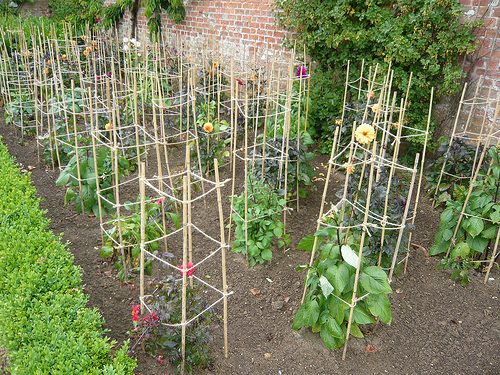Your St. Louis Landscape Company – More Summertime Tips!
Tips from Your St. Louis Landscape Company – Environmental Landscaping
1. Using pest controls is a personal decision. July brings a spike in insect and disease populations. There are numerous options for pest control, including letting nature run its course and living with your losses or taking preventative measures by applying a chemical at the onset of a pest problem. There are many low-impact chemicals on the market that are derived from botanical and biological organisms. The key is to properly identify the pest and use all products according to the label directions. Pest management products are EPA approved for use per the label. Late evening is often the best time to spray.
2. Irrigate as needed during the dry summer months. An irrigation system can be fitted with a rain sensor to save water and avoid operating rainy days. Afternoon thunderstorms in July can produce a lot of rainfall. However, in sandy soils of the coastal region, lawns may suffer if not monitored for water loss. Tall fescue and bluegrass lawns can survive with only minimal water, as they go into dormancy if not fertilized and irrigated in late spring.
3. Warm-season turfgrass varieties, like Bermuda grass, St. Augustine, and zoysia should be fertilized monthly during the summer, or as needed based on a soil test. For more information on lawn management, request or download a copy of the “Lawn Maintenance Calendar” from the N.C. Cooperative Extension for your turfgrass type.
4. Mow lawns as needed, but remove no more than one-third of the height of the grass. This ensures that the root system is not stressed. Clippings can be left on tall fescue lawns to recycle nutrients and add organic matter back into the soil. Raise the cutting height on cool-season grasses in shady lawns during the summer months. This also helps reduce weed infestations and support grass root systems.
5. St. Augustine grass is susceptible to chinch bug infestations. Close examination of browning areas in the lawn can reveal these tiny insects. To test, use an emptied canned food can with both ends removed. Push it into the ground slightly and fill with soapy water. The insects should float.
6. Irrigation and mulching are important practices for successful landscape gardening. Experiment with drip irrigation and other low volume systems to conserve water. Rain barrels that receive storm water from your gutters are a good way to supply moisture to thirsty flower gardens.
7. Slow-release fertilizer products that contain a crabgrass pre-emergence herbicide are a convenient way to provide continuous nutrition to ornamental plantings and reduce weeding time. Hand removal of crabgrass in edible plantings is made easier by pulling them after a rain or irrigation application.
8. Deadhead annual and perennial flowers to keep their energy in flower production, not seed development. Pinch out the top buds of dahlias, phlox, and garden mums for bushier plants and more flowers later in the season.
phlox, and garden mums for bushier plants and more flowers later in the season.
9. Early July is the last call for pruning ornamental shrubs, such as azaleas and spring flowering bushes. It is important to water shrubs that are pruned for normal recovery. Evergreen hedges are hand-pruned or sheared as needed during the summer months. Boxwoods are best pruned in early spring. Prune to remove faded blooms of Knockout roses. Fertilize roses monthly until September with fertilizers such as: 10-10-10; one gallon of liquid fertilizer dilution; or fish emulsion.
10. Staking gladiolus, dahlias, crocosmia, and other lanky perennials is important to prevent stem breakage and enhance the flower display. The choices of staking materials run the gamut, from bamboo stakes and tobacco sticks to hardware cloth and rebar. Rebar, commonly used in home construction, can be a useful material to create sturdy forms for tall perennials and supporting annual vines. Use heavy gauge wire to form a teepee-like trellis. Garden twist-ties and cable ties attach well to wires.
Environmental is one of the top landscapers in all of the St. Louis and Illinois East Metro areas, including Belleville, Collinsville, Edwardsville, Glen Carbon, Shiloh, Columbia, Fairview Heights and Alton. Questions about our service area? Give us a call at (636) 225-3848 or contact us online! We can usually find a way to accommodate you on many types of projects.
Tory Catanzaro – Owner, Environmental Landscaping








